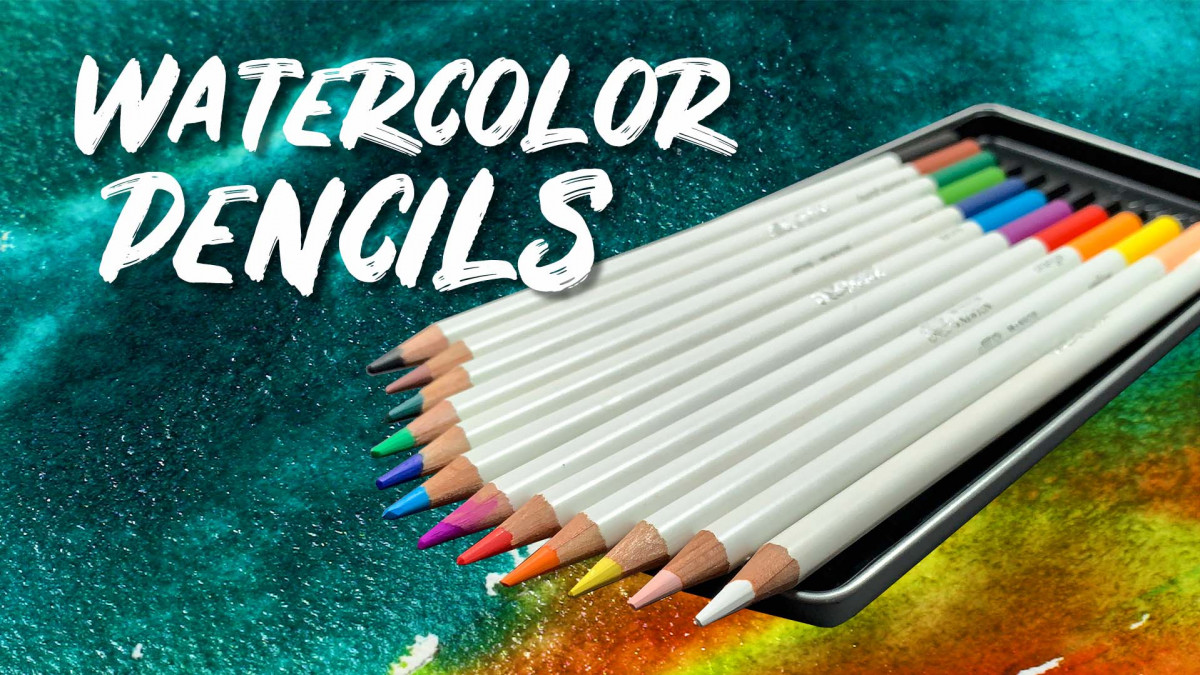Six Easy Techniques with Watercolor Pencils.

SUMMARY: Using watercolor pencils allows you to create crisp, soft lines with added textures not achievable with paints.
Watercolor pencils - also known as aquarelle pencils - contain the same pigment you find in watercolor paints, but encased in a wooden tube. They’re similar to regular colored pencils, but the inner core is made from watercolor pigment. Unlike regular colored pencil which use a wax or oil base to bind the pigments, watercolor pencils are water-soluable and can be used dry or wet. While watercolor paints are likely your main tool for watercolor art, watercolor pencils are a great addition to your toolbox.
Key Takeaways
1. Watercolor pencils offer versatility and allow artists to create crisp and soft lines.
2. Artists can use either wet and dry methods when using watercolor pencils.
3. Watercolor pencils are ideal for detailed work that could be difficult to do with paint.
Benefits of watercolor pencils
Watercolor pencils are awesome for their versatility. They are inexpensive and very portable which gives them an advantage of traditional paint. They can easily be used along with your pan or tube watercolors. You can choose to use watercolor pencils just like you would colored pencils, leaving them dry, or lay them out on paper and paint over them with water, turning the hard pigment into wet watercolor paint. In both cases, you’ll have the opportunity to create crisp, clean lines. If you choose to add water, you can create a vibrant wash or a gradation and blend out the lines completely.
An advantage to pencils is that they can be sharpened to a fine point. This allow them to be used for fine, delicate details that may not be difficult to achieve with a brush.
Watercolor pencils are also extremely convenient. If you’re on the go, they are easy to throw in your bag and pull out when you see something inspiring that you’d like to sketch. You can decide whether you’d like to paint over the lines with water then, or later on at home.
Six techniques for using watercolor pencils
As mentioned above, you can use wet and dry methods when using watercolor pencils. You may find that one is more difficult than the other, so using the right technique is key.
Dry on dry, then add water
Perhaps the easiest technique is using dry pencils on dry paper, then adding water. Use this technique by sketching out your desired shapes, lines, and colors. Next, you can choose to paint over it with plain water or with watercolor paints. By using plain water, you can float the color away from the initial line and gradate the pigment. It can also be effective to sketch a painting using watercolor pencils instead of graphite pencils, then adding watercolor paints. With this method, you can blend the watercolor pencils into your painting and avoid any grey lines.
Wet paper, dry pencil
Wet your paper using a spray bottle or by brushing clean water on the area you want to paint. Then, use a dry watercolor pencil to draw on the paper. You’ll need to work quickly, as the paper will begin drying as you work. Add water as needed. The effect of this method is will produce softer lines as the pigment reactivates and flows with the water on the paper.
Dry paper, wet pencil
Alternately, you can dip the tip of your pencil into water and apply it to dry paper. This method is similar to painting with a brush. The pigment from the pencil will be a bit more vibrant than a dry pencil. The lines will be softer than a dry pencil as the pigment will settle into the texture of the paper.
Wet-on-wet
You may also wet your paper and pencil. This method creates a much looser look and feel than a dry pencil. You won’t get the same clean lines as you do with dry on dry, but you will get a lot more texture and more vibrant colors. Anytime you wet your pencils, make sure to dry them afterward so you can preserve them for future use.
Wet brush and wet pencil
In this method the pigment in the pencil acts like paint in a dried pan. With a wet brush you pickup paint from the tip of the pencil and apply to paper as you normally would. Another trick is to flick the tip of the pencil with a wet brush to create a splatter effect on the paper.
Sketch transfer
A unique use for watercolor pencils is to transfer a sketch from drawing paper to watercolor paper. Unlike graphite pencils which will leave a permanent line in your painting once they get wet, the lines from watercolor pencils will blend into your pigment and disappear.
Final Thoughts
Watercolor pencils have a lot to offer - from crisp lines to soft, more textured pieces. As with all art, give yourself time to play with the medium and see what works for you. You might be surprised by what you find!
Interested in learning more?
Check out our Watercolor Club Facebook group where we hold weekly painting challenges.
Read "16 simple things to know to begin with watercolors and create successful paintings" by clicking here.
Download our free Top 10 Watercolor Tips by 200 passionate painters
Check out our YouTube video on this subject with Arts of Course watercolor coach Jess Rice:
Categories: : Watercolor tips
 Greg Nosaty
Greg Nosaty 